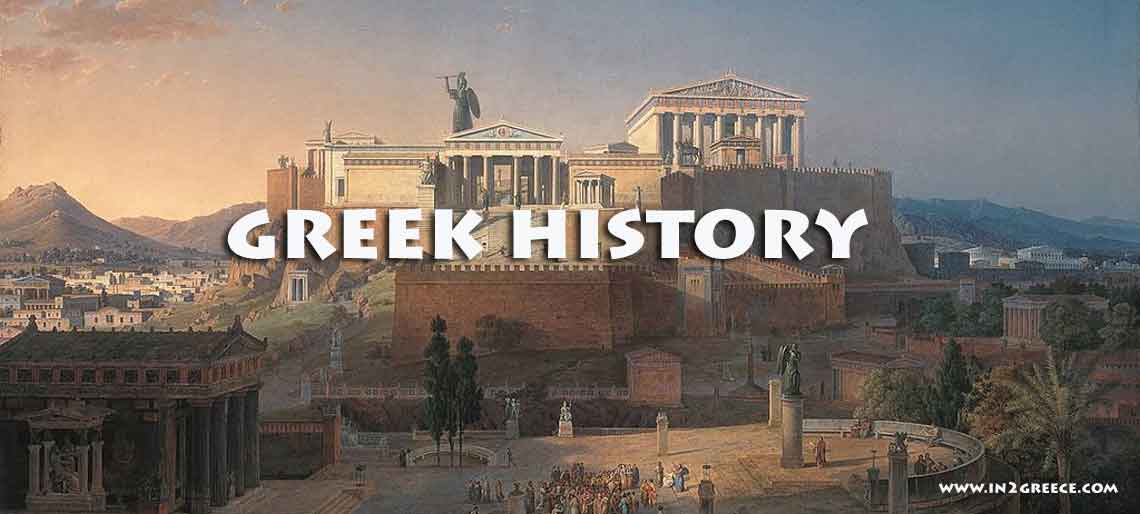The art and culture of the Mycaeneans
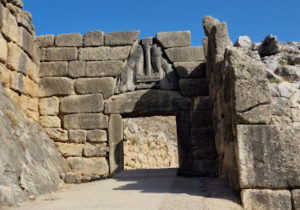
At the same time, they themselves look for precursors of the later Greek classical culture in the Mycenaean period, considering – after the identification of the Mycenaean Linear B writing with the Greek language after its decipherment by M. Ventris – the Mycenaean culture as the “first Greek culture“.
References to art emphasize the influence of Minoan art, but on the other hand they also recognize “pure” Mycenaean features, as, for example, happens in the case of architecture.
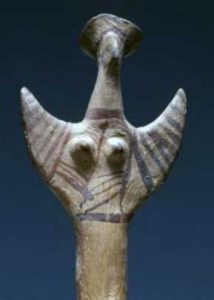
Then it is believed that Minoan Crete collapses and is replaced by Mycenaean rule over the entire Aegean, which results in the phenomenon called the “Mycenaean Common”.
The “Mycenaean Common” does, of course, indicate shared cultural elements, for example in language, manners and customs, religion and material culture, but it may also refer, in addition to a possible community of people with a “consciousness” of common origin, to a society with common demands and symbols for the identities and ideas of its people.
It may indicate, moreover, a mass and standardized production of objects which predominates in relation to the handmade production of small communities and households, a phenomenon somewhat similar to today’s elimination of artisanal, artisanal and “unique” products, from the corresponding standardized and similar industrial ones.
In the above context, two are considered, traditionally, as the main characteristics of Mycenaean art: a) the influence of the art of the Minoan culture that developed in Crete from the 19th to the 15th century. e.g. (ca. 1900-1450 BC), and b) the “warlike”, violent and competitive nature of its content, from the 15th c. e.g. and then, in contrast to the predominance of subjects from nature, but also subjects considered “peaceful” in the corresponding Minoan art.
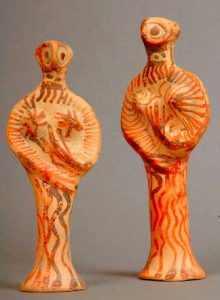
In addition, an important role in the production of objects related to art must have been played by trade, which must have contributed the most to the spread of the “Mycenaean public”.
Figurines, jewelry, amulets, seals, Egyptian scarabs, vessels, weapons, tools, and weights made of various materials such as alabaster, clay, faience, crystal, ivory, marble, copper, gold, and silver were traded throughout the known world of the Late Period of Bronzeage from the western Mediterranean, present-day Italy, Sicily and Sardinia to the eastern Mediterranean of the Egyptians, Hittites, Assyrians and Babylonians and the inhabitants of the Syro-Palestinian coast, with the peoples of the Aegean and Cyprus in the middle.
Architecture
The palaces were protected by walls within citadels where they were built at their highest points. The palaces of mainland Greece were simpler buildings than the Minoan palaces. Mycenae is famous for its enormous walls, the so-called cyclopean walls and the well-known Gate of Lions. What constitutes a landmark in the history of architecture are vaulted tombs.
Painting
As in the Minoan culture, a great development is noted in the art of mural painting. Murals with themes of beautiful women, adorned with jewels, beautiful hairstyles and dresses but also themes with battles, gods, musicians and animals which we find in palaces, rich houses and sanctuaries
Sculpture
An example of sculpture is the relief of the Gate of Lions located in Mycenae. Small clay figurines found in Mycenaean cities are also known.
Mycenae 13th century BC Found in the acropolis of Mycenae and is one of the most important examples of Mycenaean art, this female figure is impressive for its naturalness and vitality.
Angiography
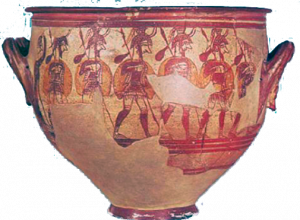
The Mycenaean figurines Φ and Ψ, whose name derives from the similarity of the shape to the two Greek Greek letters, began to be manufactured at the end of the 15th century. and continue to be used until the end of the 12th century BC.
Their origin should be sought in the Minoan tradition. They are small in size with a height of about 10 cm and handmade. They have a bird-like face, and the eyes are either additional clay beads or painted.
The figurines Φ and Ψ are found in sanctuaries as votives, placed on altars or in houses and in tombs, mainly children’s toys. It is a fact that their symbolism was complex and their use probably varied according to the occasion and the place where they were found.
